Reports
Chongsu Nuclear-Grade Graphite Production Plant? North Korea may be proliferating controlled nuclear goods
by David Albright
April 20, 2018
During the last few years, North Korea has raised nuclear proliferation concerns by distributing abroad a commercial, English-language color handout that offered to sell nuclear-grade graphite, an internationally controlled nuclear dual-use material. This handout was distributed on a limited basis prior to January 2018 and could not be found on the internet, but Institute staff learned of the handout from someone who had access to one of them. Nuclear-grade, high-purity graphite, is controlled because it can be used in nuclear reactors. It is used as a neutron moderator in certain types of reactors, such as in the 5 megawatt-electric (MWe) at Yongbyon, the gas-graphite reactor that was being built in Syria and was destroyed by Israel in 2007, and possibly in the Yongbyon experimental light water reactor nearing operation. Other more advanced reactors also use nuclear-grade graphite.
Intensifying concerns that North Korea is seeking nuclear customers for the graphite is the fact that North Korea’s Ministry of Atomic Energy is building a new plant to make the graphite, according to a knowledgeable government official. Moreover, the handout mentions that the graphite can be used to make artificial isotopes or as a moderator. Both cases are code for use in nuclear reactors, implying that North Korea is actively seeking buyers who would use the graphite for nuclear purposes.
It is unclear today who would buy nuclear-grade graphite from North Korea, given the extent of United Nations and unilateral sanctions against the country. When North Korea’s atomic establishment started the Chongsu construction project several years ago, it may have viewed prospects for finding a customer more likely. The atomic energy establishment may have wanted a source of nuclear-grade graphite for its own reactors as well as to generate hard currency via exports.
One potential customer remains Syria, since it may seek to again build the same type of reactor destroyed by Israel.1 As the civil war winds down, Syria may revive its nuclear programs tied to its national survival.
This plant would be the second high-quality graphite production plant in North Korea. The other one is administered by the Second Economic Committee and makes graphite for missile programs domestically and abroad.
North Korea should understand that any sale of controlled nuclear goods violates the spirit of the upcoming summit processes with the United States and South Korea. Any nuclear agreement reached with North Korea must contain its verifiable commitments not to proliferate nuclear goods and to abide by internationally recognized strategic export control regimes. More broadly, the United States and its negotiating partners must keep in mind that any negotiation should include the achievement of verifiable commitments by North Korea not to undertake nuclear, chemical, or biological proliferation and not to spread the means to deliver them. Limiting North Korea’s sale of the wherewithal to make weapons of mass destruction and the means to make them is an essential part of any such commitment not to proliferate.
Analysis of the Chongsu Site
According to a knowledgeable official, the suspect site for this new nuclear-grade graphite production plant is a facility near Chongsu on the Yalu River directly across from China. Construction of this new facility started several years ago. Prior to 2014, as part of building this plant, North Korea’s atomic establishment conducted additional graphite research and procured in China both equipment and technology for the plant. As part of this project, North Korean scientists went to China for training in making graphite.
Figure 1 shows a Google Earth image of a complex at Chongsu on May 11, 2017, which the Institute is calling the Chongsu Industrial and Laboratory District. Japanese Wikimapia labeling identifies the area of interest at Chongsu as the “Shing Pong Laboratory District.” The suspect facility can be identified by new red roofs seen in figure 2.
This facility appears to be a repurposed coal burning thermal power plant (TPP). Figure 3 shows the facility on May 30, 2010, where smoke can be seen emanating from one of two stacks and a coal conveyor system is visible. Figure 4 shows the facility in 2006.
Figures 5 and 6 show construction progress at this site from 2014 to 2016, showing extensive renovation of the coal burning thermal power plant. The renovation of the plant and adjacent area included the addition of red roofs and improved security. Figure 5 is from April 2, 2014 and shows the powerplant as likely no longer functional. Figure 6 shows the site on May 18, 2016. A significant part of the electrical substation was dismantled. The entire coal conveyor system of the TPP was also dismantled. There may have been an attempt to convert the plant to fuel oil several years ago. The repurposed facility has a new entrance road and is surrounded by a new security perimeter wall with a security checkpoint building at the front gate (see figure 6).
There is also a new large building located at the south end of this industrial and laboratory district (see figure 1). This large building, located in a secured military industrial facility, was completely dismantled and rebuilt as an entirely new building with new, more modern architecture and a new blue roof (see figures 7-9). Its function could not be determined since there do not appear to be clearly observable functional signatures.
The rest of the site has a several industrial facilities that likely include foundries, machine shops, and perhaps a chemical processing function at one of the facilities at the site that originally had a gas-holder tank on site. Those facilities did not exhibit any major overhauls as described at the two facilities above during the eleven years covered by Google Earth (2006-2017).
Figure 1. Complex at Chongsu suspected to contain a nuclear-grade graphite production facility.
Figure 2. Close-up of suspect nuclear-grade graphite production facility.
Figure 3. Coal-fired thermal power plant at Chongsu site in 2010, prior to extensive modification, with smoke visible.
Figure 4. Coal-fired power plant at Chongsu in 2006.
Figure 5. Modification of the coal-fired coal plant and associated facilities in 2014, showing extensive changes.
Figure 6. Modified coal-fired plant in 2016.
Figure 7. Original military or industrial facility at the Chongsu site, 2014.
Figure 8. Military or industrial facility undergoing demolition at the Chongsu site in 2014.
Figure 9. New building with blue roof at the Chongsu site, 2017.
1. David Albright, Sarah Burkhard, Allison Lach, and Frank Pabian, “Is the facility at Qusayr, Syria an underground nuclear facility? Public Evidence remains inconclusive,” Institute for Science and International Security, March 21, 2018, http://isis-online.org/isis-reports/detail/is-the-facility-at-qusayr-syria-an-underground-nuclear-facility↩


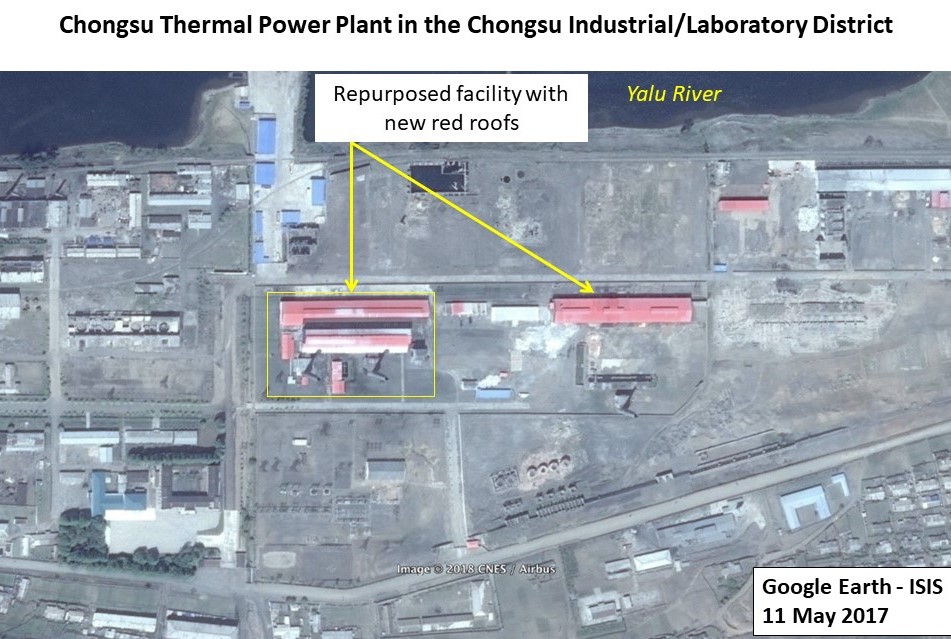
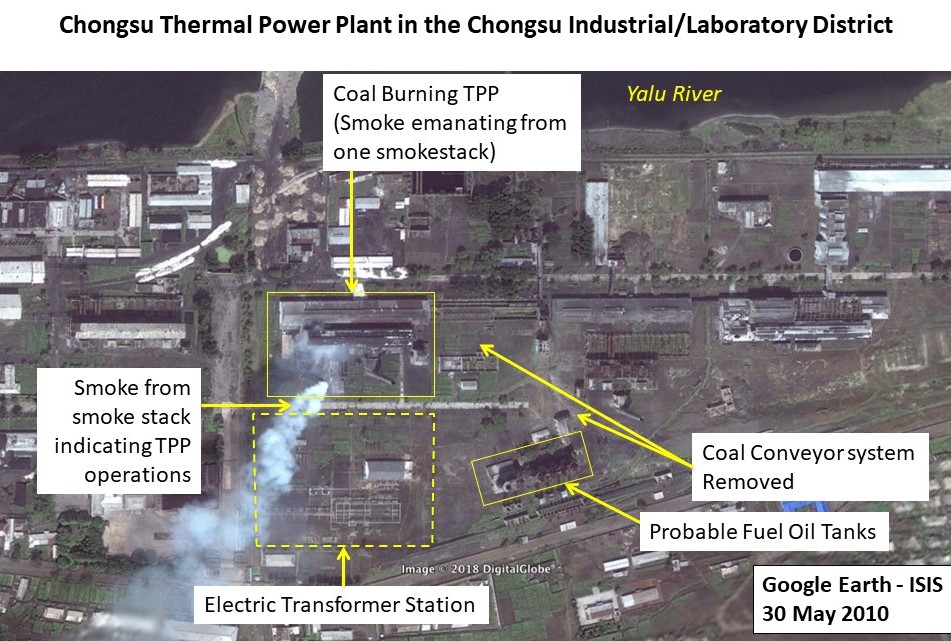
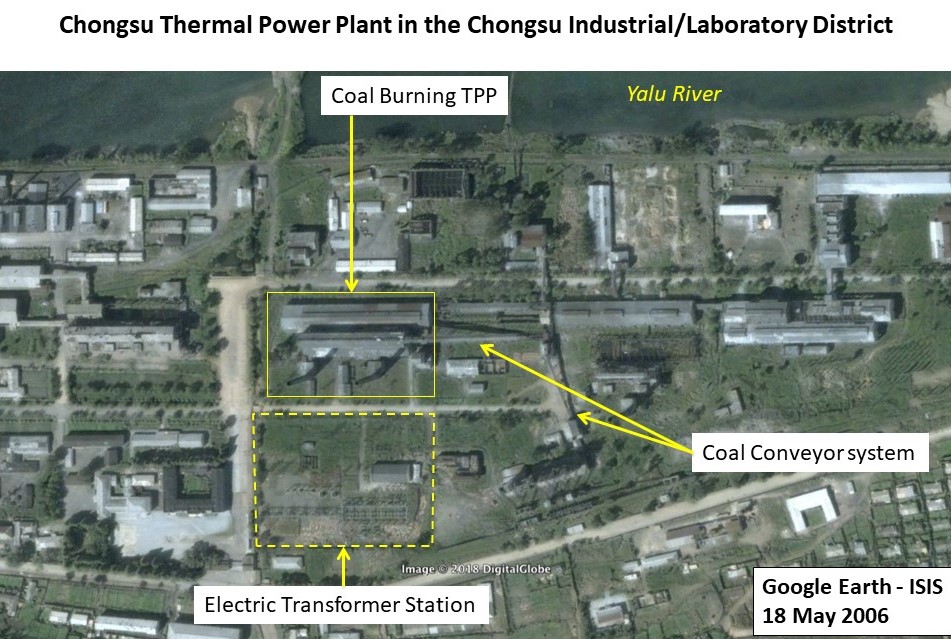

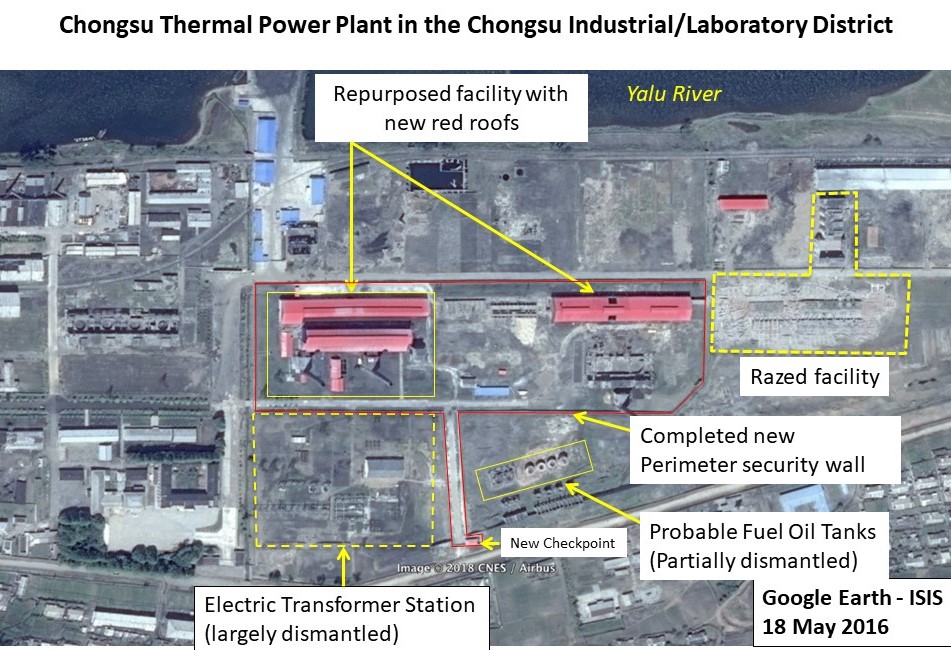
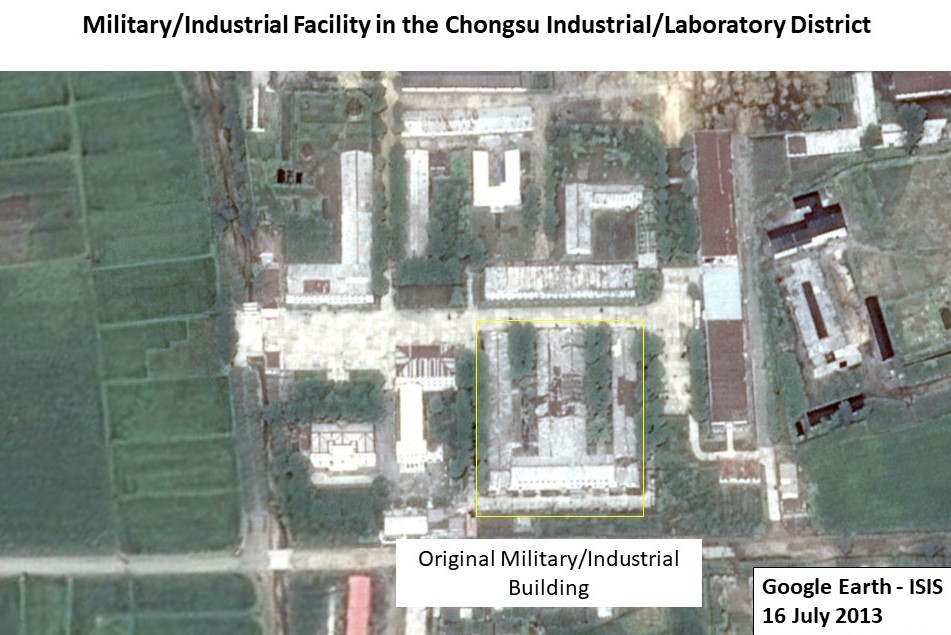
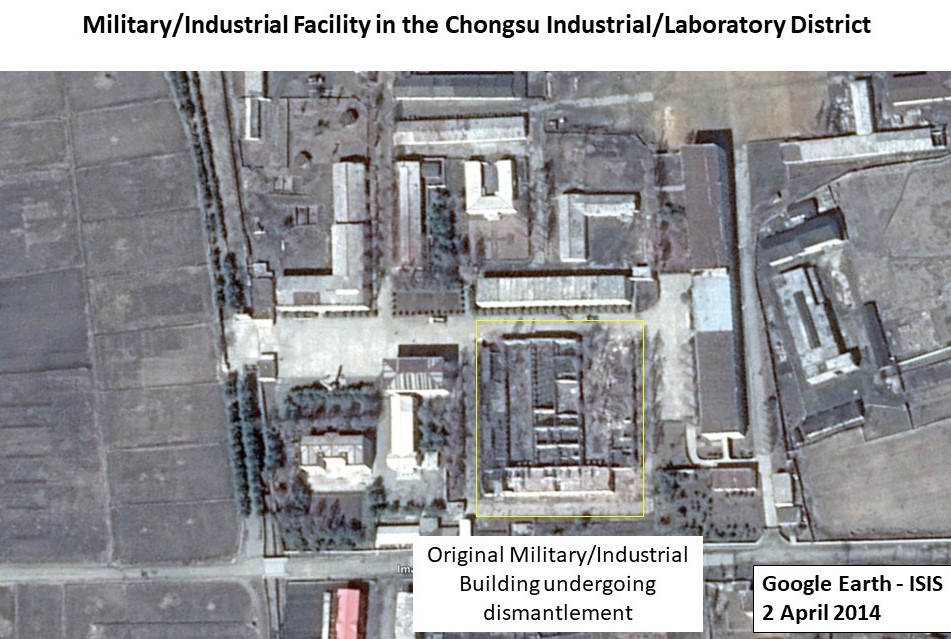
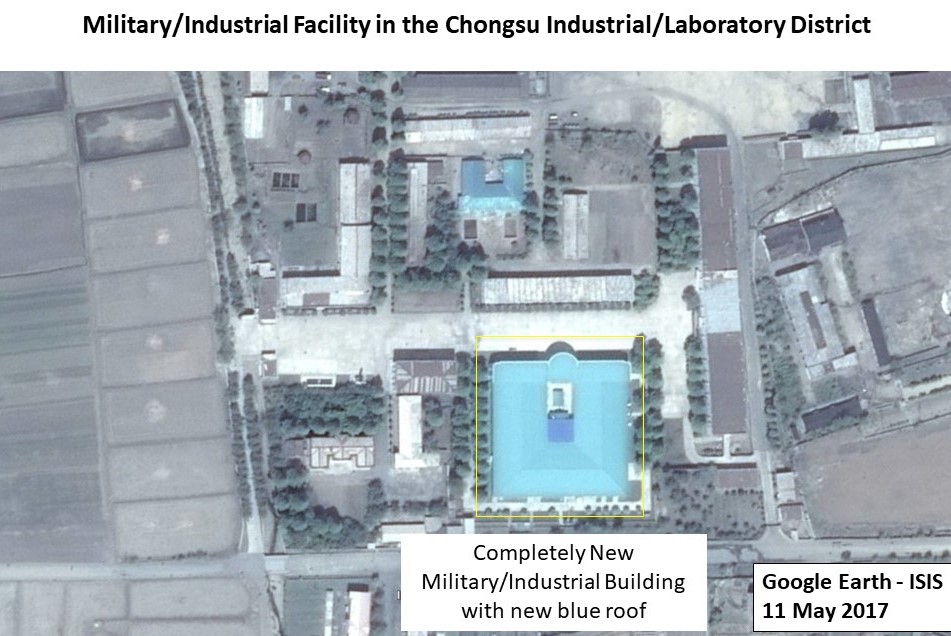
 twitter
twitter